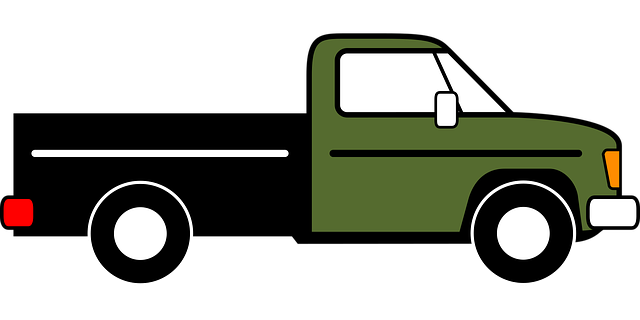Looking to register your car in California? This comprehensive guide breaks down the process step-by-step. From understanding key requirements to submitting your application, you’ll navigate California’s vehicle registration with ease. We cover essential documents, the crucial role of VIN verification, and efficient online or in-person registration methods. Ensure a smooth experience by following these expert tips tailored for the Golden State.
- Understand California Vehicle Registration Requirements
- Gather Necessary Documents for Car Registration
- Perform VIN Verification: Steps and Importance
- Choose an Appropriate Registration Method: Online or In-Person
- Submit Application and Pay Fees for Car Registration in CA
Understand California Vehicle Registration Requirements

Before registering your car in California, it’s crucial to understand the state’s specific requirements for vehicle registration. One key aspect is ensuring accurate and up-to-date information, starting with a valid Vehicle Identification Number (VIN) verification. California requires that all vehicles undergoing registration be accompanied by a current and legitimate VIN from a recognized vehicle manufacturer. This process involves cross-referencing the provided VIN with official databases to confirm its authenticity.
Additionally, a mobile vin verifier or mobile vin inspection service can streamline this step, as these services allow you to verify your car’s VIN digitally, saving time and effort. By combining meticulous record-keeping with modern technology like mobile vin verification, California ensures that only legitimate vehicles are registered, enhancing road safety and compliance.
Gather Necessary Documents for Car Registration

Before you start the registration process, ensure you have all the required documents ready. This typically includes your vehicle’s Registration Application (Form DMV-123), a valid driver’s license or ID card, proof of insurance, and perhaps most importantly, the Vehicle Identification Number (VIN) verification. The VIN is a unique code that can be found on the vehicle’s registration label or in its manual; it serves as a fingerprint for your car and is crucial during the vin inspection.
For added convenience, many services now offer mobile vin verification, allowing you to complete this step without visiting a DMV office. This involves a professional inspecting your vehicle and providing the necessary VIN data, making the registration process smoother. Having these documents readily available will help ensure a faster and more efficient car registration experience in California.
Perform VIN Verification: Steps and Importance

Before registering your car in California, it’s crucial to perform a Vehicle Identification Number (VIN) verification. This process involves checking the vehicle’s history and ensuring its authenticity, which is essential for safety and legal compliance. A mobile VIN verifier or inspector can assist in this step by providing on-site inspections and instant digital reports, making it convenient for both buyers and sellers.
The steps to conduct a VIN verification are straightforward: first, locate the VIN number on the vehicle—usually found on the driver’s side door frame. Then, use a reputable mobile vin verification service to cross-reference this number against national databases. This check will reveal important details such as previous ownership history, accident records, and outstanding recalls, ensuring that the car is in good condition and fit for registration.
Choose an Appropriate Registration Method: Online or In-Person

When registering your car in California, you have two primary options for submitting your application: online or in-person. Both methods streamline the process, but choosing the right one depends on your preference and accessibility to resources. Online registration is a convenient, time-saving option that allows you to submit all necessary documents digitally. This method also includes a step for vin verification, where you can use official tools like a mobile vin verifier or conduct a mobile vin inspection to ensure the vehicle’s authenticity.
On the other hand, in-person registration involves visiting a California Department of Motor Vehicles (DMV) office with your documents and vehicle in tow. This option might be preferable for those who are unfamiliar with online processes or prefer face-to-face interactions. At the DMV, you’ll also need to undergo vin verification, but it can often be conducted on-site using specialized equipment provided by the agency.
Submit Application and Pay Fees for Car Registration in CA

To officially register your car in California, the next step after gathering necessary documents is to submit an application and pay the required fees. This process involves completing a Vehicle Registration Application (Form DV305) available from the California Department of Motor Vehicles (DMV). Ensure all information provided is accurate and up-to-date, including your personal details and vehicle specifications. Accompanying this form will be several documents, such as proof of insurance, proof of ownership through a bill of sale or lease agreement, and a valid driver’s license.
The fees for car registration in CA vary based on the type of vehicle and its age. You can typically pay these fees online, by mail, or in person at any DMV field office. After submitting your application and paying the fees, you may be required to undergo a vin verification process, which involves checking the vehicle’s unique identifier (VIN) to ensure it matches the details provided in your application. Alternatively, you can utilize a mobile vin verifier for this step, making the process more convenient.
Registering a car in California involves understanding key requirements, gathering essential documents, and completing necessary steps like VIN verification. By following the outlined process, whether online or in-person, you can ensure a smooth registration experience while adhering to state regulations. Remember, proper vehicle registration is crucial for road safety and legal compliance.
